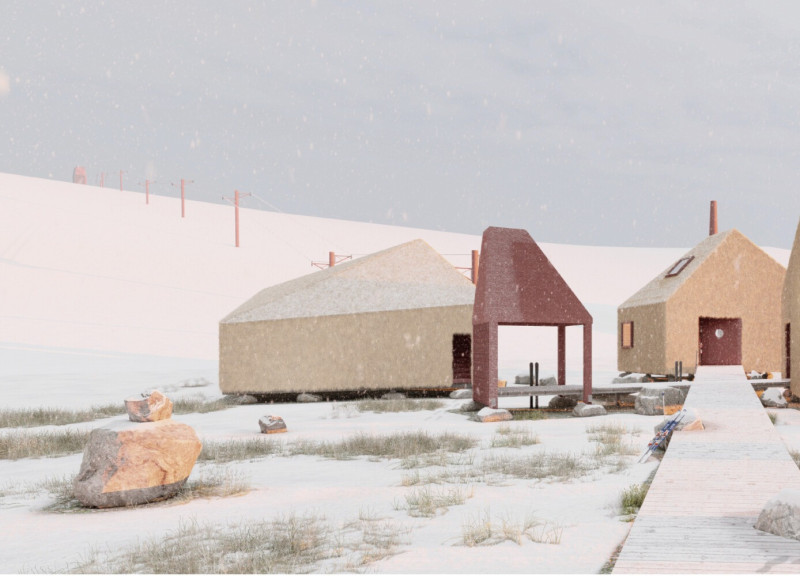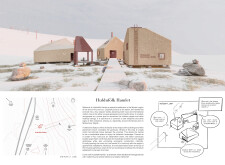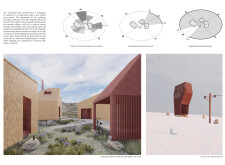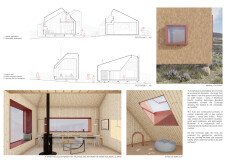5 key facts about this project
### Overview
Located in the Myvatn region of Iceland, the Hludufolk Hamlet is an architectural initiative that aims to harmonize traditional heritage with contemporary sustainability practices. The development seeks to create a settlement that attentively interacts with the surrounding natural landscape while incorporating aspects of local folklore. The design intention focuses on promoting ecological awareness and fostering a sense of community within this unique environment.
### Spatial Strategy and User Experience
The hamlet's design employs a strategic spatial arrangement that enhances the user experience by creating sheltered outdoor spaces through the careful orientation of buildings. This layout provides protection against harsh environmental conditions such as wind and snow, encouraging outdoor living and social interactions. Furthermore, the placement of large south-facing windows maximizes sunlight during winter while mitigating overheating in summer. Spaces are designed for both communal activities and private retreats, reflecting a balance between social engagement and personal reflection.
### Materiality and Sustainability
Material selection plays a crucial role in the functional and aesthetic aspects of the hamlet. The use of thatch for its insulating properties, local wood for structural integrity and warmth, stone for foundational support, and strategically placed glass for natural light creates a cohesive architectural language. Sustainability is integral to the project, with geothermal energy providing power and compost toilets minimizing environmental impact. This focus on self-sufficiency aligns with traditional rural living practices, reinforcing the connection to the cultural landscape while promoting ecological stewardship.
Incorporating local myths into the design serves as a storytelling mechanism, engaging visitors with the cultural heritage of the area. The architectural forms, characterized by sloped roofs and varied volumes, enhance the dynamic interplay between built structures and the surrounding environment, further enriching the experience of the hamlet.






















































